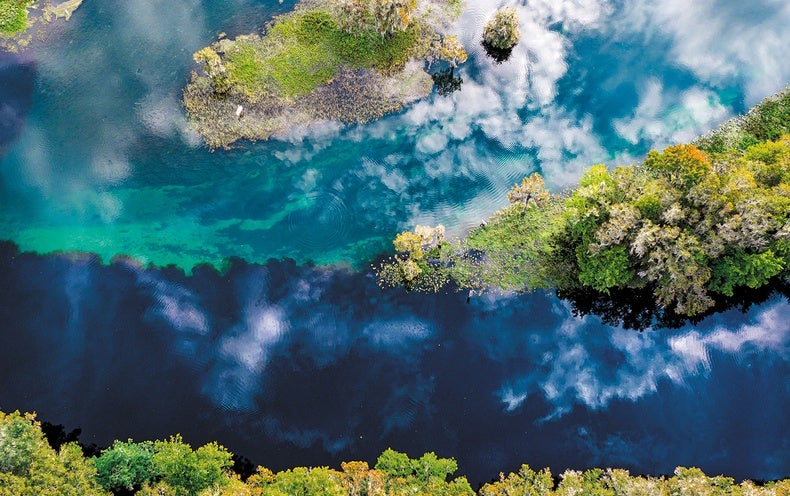Science in meter and verse
Credit: Michael Warren/Getty ImagesAdvertisement
Edited by Dava Sobel
When two rivers meet,
they sometimes hesitate to mix.
The murky sediment load carried by one
keeps its distance from
the clear blue-green of the other.
Each reflects the color
of the landscape it has carved,
sometimes with caution,
and sometimes with turbulence.
Steep canyon walls bear witness
and scars of the steady descent
of water molecules pulled by gravity,
eroding crystals and grains, thirsty clay particles
that tumble and drift in the flow.
The rivers emerge and meander
away from the rugged mountains
and toward each other,
beginning to unburden their loads.
The distinct paths become one,
and the denser stream ducks under,
hiding its sedimentary past
along the line of mixing,
where eddies test the waters.
Clouds and clarity
complement each other,
and, with time,
dispersion and blending
shift the current into balance.
This article was originally published with the title “Confluence” in Scientific American 328, 5, 24 (May 2023)
doi:10.1038/scientificamerican0523-24
ABOUT THE AUTHOR(S)
Marianne Karplus, a geophysicist and associate professor at the University of Texas at El Paso, is inspired to write poetry during her scientific field expeditions in the western U.S., the Himalaya and Antarctica. Her poems have been published in several literary magazines.
Read This Next
Newsletter
Get smart. Sign up for our email newsletter.
Support Science Journalism
Discover world-changing science. Explore our digital archive back to 1845, including articles by more than 150 Nobel Prize winners.

